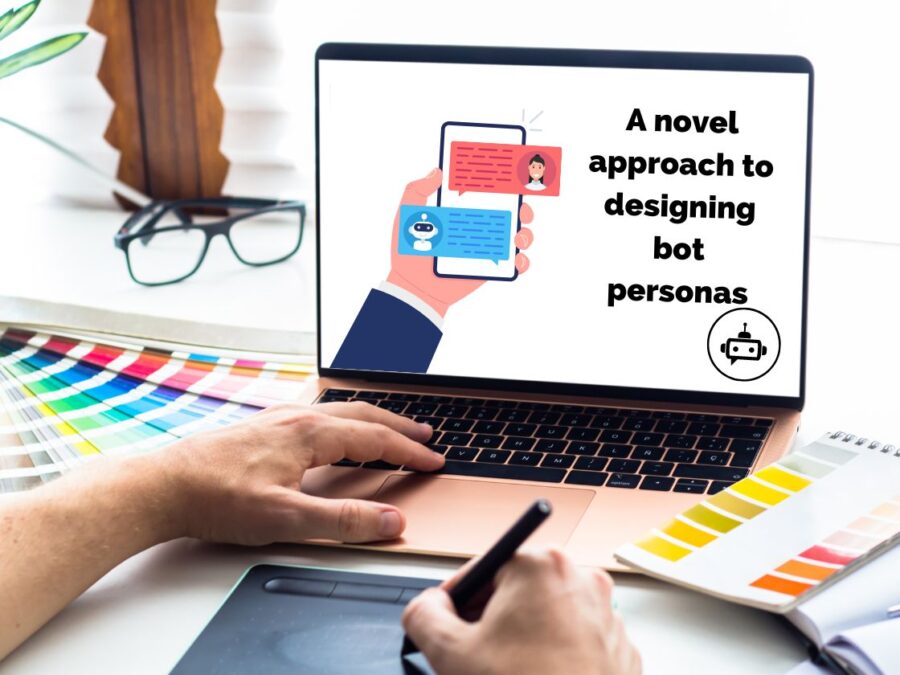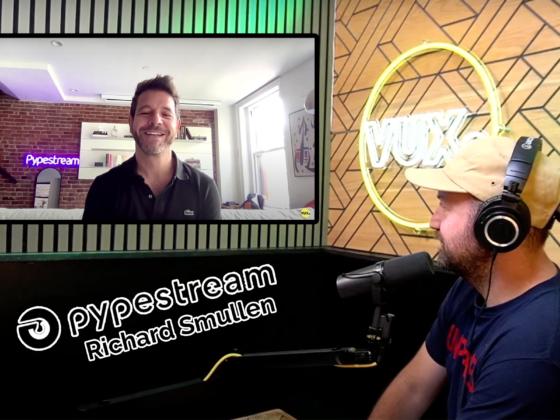“There is no such thing as a voice user interface with no personality,” according to Voice User Interface Design, written by Michael H. Cohen, James P. Giangola and Jennifer Balogh in 2004.
It looks like these words have been taken to heart because, nowadays, everyone wants to design an exciting persona for their bot or digital assistant.

The general consensus in the conversational AI community is that personas matter. Users will judge a bot harshly on its bad behaviour. Is it overly chatty? Is it unhelpful? Is it downright rude or seemingly incompetent at its job? Does it go rogue and off the rails?
That’s why design teams take personas seriously – bots are usually right on the front line between the brand and the customer.
How much focus do you need to put on developing a fully-fledged persona, though? Kane Simms asked that back in 2020. And is the way you’re taught the right way?
Perhaps we’re now closer to the answer thanks to Dawn Harpster, Senior Conversation Architect at Talkdesk. Dawn has a novel approach to designing personas that is well worth consideration.
Solid rationale
TalkDesk’s customers need transactional bots for their contact centres. That affects Dawn’s approach to designing personas. She doesn’t create design documents for a nuanced character, where she’s considered every kind of detail, such as their favourite food or movie, their parent’s profession, dog’s daily walking route or their cousin’s shoe size. Those details aren’t necessary for the conversations Dawn designs.
For Dawn, it’s all about the users:
“I feel like, if you focus too much on the persona, you lose the user. You know, the transactional nature of what we do – it’s pretty short, right? It’s a pretty short interaction, three or four prompts, and we’re getting the user somewhere, or we’re telling them a bit of information. So it doesn’t need to be a novel.”
Primarily, the bots she designs aim “to get things done, to complete tasks, to lower agent handle time. You know, things that are repetitive.” For example, Dawn designs bots to assist customers when they call to check on the status of a delivery.
Getting into the user’s head
Don’t think Dawn avoids designing personas completely – she just takes a different approach.
Her main resource is user research. She’ll pick through it to find what users want, and then imagines herself as the bot they should talk to and writes utterances for that.
“You’re trying to get into the headspace of the user, right? I mean, that’s why I shy away from creating personas, because I don’t want to be in the persona’s head, I want to be in the user’s head.”
To ensure she doesn’t stray too far from the brand, Dawn reads the brand’s guidelines too, and makes sure that the bot talks the way the brand aims to be heard. Each bot has different needs.
“It depends on the brand… If you’re doing Surfer Boy pizza it’s one thing, but if you’re designing for a bank, it’s another”
So, Dawn always delivers a persona of sorts, but the process for creating it is different from most other conversation designers who spend time dreaming of their assistant’s star sign and exercise routine.
Think differently
Some folks in the conversational AI industry may find Dawn’s approach revolutionary, others may initially think of it as counterintuitive or open to issues if a persona isn’t detailed and documented extensively, as we’ve been taught.
But let’s think about each of those arguments for a moment.
Is it revolutionary? Many would say we’re still defining the best practice for conversation design because the industry is still being developed. Dawn’s been designing conversations for decades and has seen how personas became a focal point – most conversation design courses will emphasise their importance. Dawn says personas are important too, they’re just considered from a different angle.
And Dawn has documents! For her, the user research and brand guidelines are the launch-pad for writing. They tell her how the assistant should behave, how it should talk to the target user, and how the brand wants to present itself. Projects sometimes change hands, and when that happens Dawn has her design documents – she has notes about style and user personas.
Although these personas aren’t typical, they actually do a better job at what’s most important: meeting the needs of users. Every designer can learn from this process.
There are many benefits
This is just a subtle twist in the process, and it makes a lot of sense.
Instead of locking your persona down to a document that the entire team should follow, you’re inviting the team to do their proper research and study users. That’s hugely important. Everyone should know their users – Cobus Greyling, ex-Product Owner at Vodacom South Africa, responsible for SA’s implementation of renowned assistant, Tobi, recommended monthly transcript reads with the whole team on the VUX World podcast.
A persona design document isn’t as concrete as you may think. It can still be interpreted in different ways. Think of all the different Bat-men we’ve had over the years – they were all the same underlying persona. Even a fully-fledged character design can still go awry (thanks George).
Persona design isn’t limited to the bot’s words either. Like a voice casting agent, Dawn will work with the brand to select the right voice for their project – whether they need a youthful, hip TTS voice, or a wise, trustworthy one.
Why not try it too?
So you see, this process has virtues.
Dawn and TalkDesk create a persona that’s right for users – and that’s really the most important thing.
Every bot is different. Some assistants need to be chatty, and have opinions. A companion bot needs to be ready to talk about pretty much anything, so it makes sense to give it a personal perspective on those topics to invite longer conversations. Some brands have a distinct personality, and some brands are personalities. Their bots would need more nuanced personas than a transactional bot.
Perhaps designers can aim for a ‘happy medium’ where they begin with Dawn’s persona design process, and once the bot has proved itself with real users only then would they document it. As with everything in conversational AI, you always start with assumptions – it’s no different with the bot’s persona. With this approach you would get validation, and then lock it down.
All you need is a solid understanding of your users and the brand to get started. Isn’t that where every conversation designer should start?
Thanks so much to Dawn Harpster, and TalkDesk for sponsoring this article. If you want to learn more you must read ‘Designing customer conversations: Best practices’ and ‘How to avoid the uncanny valley in voice design’.




